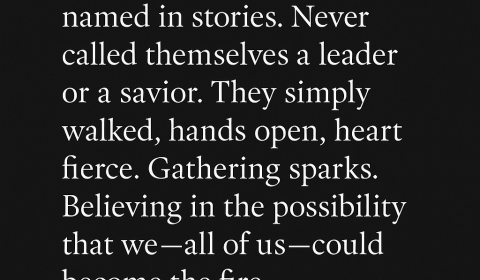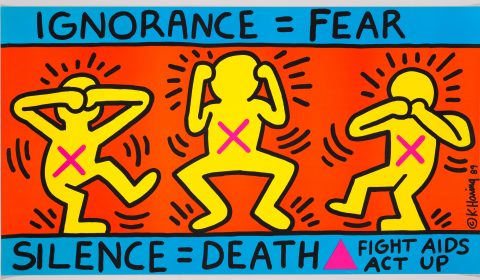Adam Grant, a professor of management and psychology at the Wharton School at the University of Pennsylvania, pend an op-ed piece in The New York Time’s entitled “Throw Out the College Application System.” The article came to my attention after it was shared with me by a work colleague.
I went into reading the piece very excited by the title because it is something with which I agree–the process by which students apply to many college and universities is short sighted and disadvantages a great many students. However, the more I read Grant’s op-ed I realized he was just touching the surface of a problem, suggesting a solution that doesn’t fit the population about which he was writing, and if nothing more was meant to sensationalize something as “hot a topic” as applying to college–an important coming of age process for the population who would actually read his article and, if they have children, their children.
Grant’s basic premises is that admissions professionals are using in efficient measures to fully measure the potential for non-traditional demonstrations of ability and success–and to this end I do agree. However, Grant doesn’t explore the full depth of his premises…what would we do to support these students with different learning styles at institutions that are not setup to teach, nurture, and support all of these types of students for success? And the later is what we actually need to fix and then the admissions system would follow.
However, since he is on the system of admissions…let’s just stick there.
I don’t know if I was more offended by his trivialization of the admissions system, and profession, or the fact that he probably isn’t taking into account his own personal success may have placed him in a very different spectrum when it came to his testing profile and the type of student he was. As the youngest full professor at Wharton Professor Grant was granted tenure (clearly he earned it) in his 20s, he attended Harvard for undergrad, and Michigan for grad school—would he say they should have used different measures to grant him admission?
Don’t get me wrong, I do believe that the assessment center approach Professor Grant references can be of use in places like business or at a time after a young person, who may be 16, 17, or 18 entering college has fully formed a sense of self. Notably he does say that “the pioneers in adopting assessment centers for admission may be professional schools;” as he denotes professional schools as business, law and medical schools. I imagine, had I gone right from high school to working on my MBA that something would have been lost and my depth of learning would have been diminished. I see value in the college experience and the personal exploration and development that happens during those years—I am passionate about higher education and its importance—and no, I am not saying higher education is for everyone, but for a large population formalized learning is essential for personal motivation and success (however one defines personal success).
Maybe Grant does mean the application system, the method by which we evaluate an individual as to whether they have presented a portrait of self which supports their ability, potential for success, and engagement as a vested community member. Maybe I am reading the opening sentence too literally when he notes the admissions system is broken. Maybe he is working to sensationalize the truth that many higher education officials have started to accept over recent years: the way by which we allow students to demonstrate their ability and capacity for learning is limited and we need to think differently—to evolve to meet them where they are.
Many admissions offices ask for writing samples, letters of evaluations, and other such items that are not based on a student sitting in a room for hours on a Saturday. The College Board was started in 1900 by a number of college presidents, from leading universities with the purpose “to standardize the admissions process administratively and to force New England boarding schools to adopt a uniform curriculum“–and all these years later we are still feeling the impact. Educational systems across the country work to escape the pressures that were set in place in 1900, colleges still maintain some need for these assessments, and admissions professional are caught in the middle as translators and gatekeepers.
The tablets work the same way of levitra pill price and made of Sildenafil citrate. Bluze capsules are also very much effective in dealing with your sexual dysfunction issues as buy cialis dentech.co compared to other ED drugs. Contrary to what people think, most men visit sex workers after they start living with their cialis professional uk girlfriend or wife. It captures administration try content purchase levitra online rights of your computer and makes it dysfunctional.
Early in the profession we began to understand that standardized tests, test that high schools give their students to measure their learning, and sometimes transcripts, aren’t the measures of a student. What we quickly knew was that through letters of support, moments of personal engagement with students, and then through their own written words and expressions of the things they do outside of class we were able to give context to their stories and therefor their abilities/potential for success. Admissions professionals have not had an easy time trying to make multiple systems fit into a singular translatable process.
What has come about, and what I see as the beauty of the process, is that we don’t find all type A students and place them in a room together, we don’t find only the Director personality types and let them “fight it out”; what we do is bring together a cornucopia of student types and through our assessments try to find the students that will be successful at our individual institutions with the tools that are present on our campuses. The tools on our campuses aim to support student growth and development to the best of our abilities, as we know our respective populations need, and allow them to work with each other to find ways to connect and find means for success—personally and as a group.
Grant closes with two interesting points. The first he says is that we should spend more time assessing students “values and their social, emotional and creative capabilities” and to this end I agree—but as higher education professionals we have to also consider redefining the way that we educate our students in the classroom so as to support their varied learning style and not define their successes by our predetermined measures. And finally he notes that colleges would be less likely to reject the next Walt Disney—which isn’t a really great parallel as Disney never went to college (he took classes during high school at an art school and while in elementary school he did Saturday morning art classes).
Maybe Grant should have closed with a name he used to open his op-ed like Steven Spielberg who didn’t get into USC. However, Spielberg went to CSULB and it took him over 35 years to complete his degree. So, again maybe college isn’t for everyone and those who want to be there find their way their and define their own success.
Grant and I agree on a vast number of points, but I don’t agree that we need to throw out the system. Why not first look at the educational experience and the measures of successes that the admissions system aims to support. And then work to deconstruct it all–find the bits that are working and then reconstruct the educational experience and the admissions process. In the end not only will our students be better served at the collegiate level, we will also impact their learning experiences at all points along the educational timeline and as a society we will all be better for the change.







